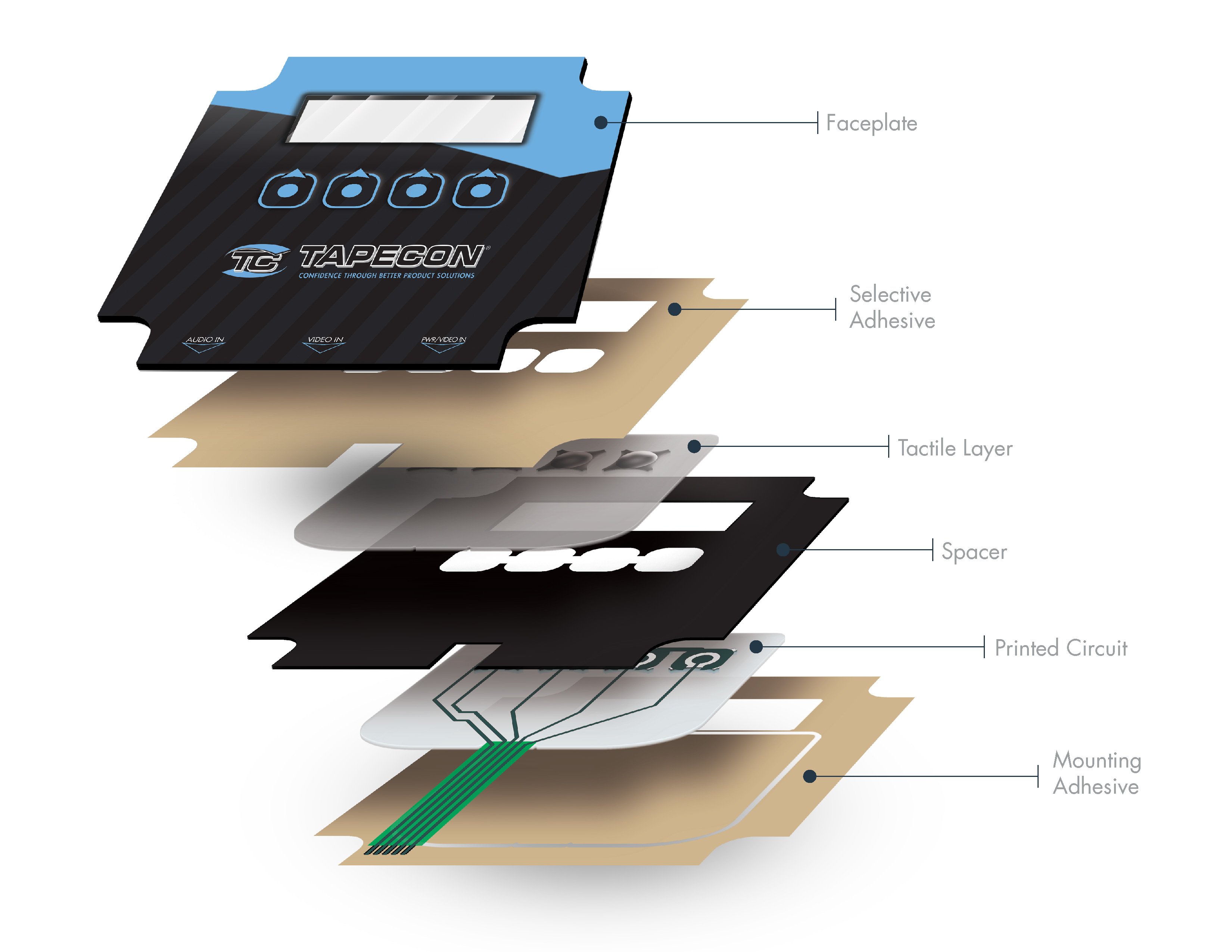Exactly How a Membrane Switch Improves Customer Experience and Tool Effectiveness
Exactly How a Membrane Switch Improves Customer Experience and Tool Effectiveness
Blog Article
Recognizing the Performance of Membrane Layer Switches for User Interface Instruments
The performance of membrane switches stands for a considerable advancement in user interface design, incorporating performance with visual versatility. As industries significantly prioritize user experience, recognizing the nuances of membrane layer switch technology becomes vital.
What Are Membrane Layer Switches?
Membrane layer switches are ingenious user interface tools that facilitate user communication with electronic equipment. These flexible components are composed of several layers, consisting of a visuals overlay, spacer, and a printed circuit layer. The layout enables for a smooth integration right into numerous digital tools, boosting both the visual and practical facets of individual interfaces.
Membrane switches are commonly utilized in a vast array of applications, from home devices to commercial machinery and clinical tools. Their building and construction typically includes a thin profile, making them an excellent option for portable layouts. The tactile comments supplied by these buttons can be crafted to fulfill details individual preferences, ensuring effective communication in between the individual and the tool.
Longevity is another considerable advantage of membrane layer buttons, as they are immune to dust, dampness, and chemicals, which improves their life expectancy popular atmospheres. In addition, these switches can be tailored in terms of shape, dimension, and graphic layout, enabling branding and user-specific functions. Generally, membrane layer switches stand for a functional remedy for enhancing individual experience in electronic devices, combining capability with aesthetic allure in an efficient way.
How Membrane Switches Over Job
Operating on a straightforward concept, membrane layer changes use a split building to sign up individual input efficiently. Each button is composed of multiple layers, including a published circuit layer, a spacer layer, and a leading graphic layer, which are made to collaborate perfectly. When a user presses the top layer, it presses the spacer layer, bringing the conductive components of the circuit layer into call with each various other.
This contact produces a closed circuit, signifying the tool to perform a certain function. The style enables various configurations, including tactile comments, which can boost the customer experience by providing a physical sensation upon activation. The materials used in membrane buttons often consist of adaptable substratums, such as polyester or polycarbonate, which guarantee durability and durability versus deterioration.

Secret Advantages of Membrane Layer Switches

An additional considerable advantage is their compactness. Membrane layer buttons are slim and lightweight, which makes it possible for producers to save room in their devices without sacrificing capability. This attribute is specifically useful in applications where weight and quantity are critical factors to consider.
Furthermore, membrane layer buttons are immune to dirt, moisture, and chemicals, improving their sturdiness. This durability expands their lifespan and decreases the requirement for frequent substitutes, causing expense savings over time.
Additionally, the responsive comments given by membrane layer buttons can be maximized to improve user communication. They can include attributes such as increased buttons or audible clicks, enhancing use and individual experience.
Applications Throughout Industries
Interface gadgets utilizing membrane layer buttons prevail in a large selection of markets, showcasing their versatility and performance. Membrane Switch. In the medical market, membrane layer buttons are essential to gadgets such as analysis tools and patient monitoring systems, where their resilience and ease of cleansing are important for maintaining hygiene standards. Similarly, in the auto industry, these switches are utilized in dashboard controls and infomercial systems, supplying a sleek check my source and modern-day user interface for individuals.
Additionally, the consumer electronic devices industry gain from membrane switches in devices and portable gadgets, where portable style and user-friendly interfaces improve individual experience. Industrial applications also utilize membrane layer switches over for control board in equipment and automation systems, stressing their toughness and resistance to harsh settings.
In the aerospace and defense sectors, membrane buttons are utilized in cabin controls and devices, where reliability and efficiency under severe problems are vital. In addition, the gaming industry progressively incorporates membrane switches in controllers and gallery machines, contributing to an engaging individual experience. On the whole, the versatility of membrane switches over enables their prevalent use across many sectors, underscoring their value in contemporary interface design.
Future Trends in Membrane Switch Innovation

Additionally, the use of sophisticated products, such as polycarbonate and polyester movies, is expected to climb, providing improved toughness and resistance to environmental stressors. These products add to the total long life of membrane buttons, making them suitable for harsher commercial applications.
In check it out addition, the consolidation of smart modern technology, including IoT connectivity, will make it possible for membrane switches to interact with other devices and systems, helping with a more interactive user experience. This fad aligns with the expanding demand for wise tools throughout various markets, from healthcare to customer electronic devices.
Finally, modification choices are expected to expand, allowing makers to create bespoke options tailored to certain customer requirements and preferences. These growths will place membrane layer switches as important parts in the advancement of interface innovation.
Conclusion
To conclude, membrane layer changes represent a pivotal innovation in interface innovation, supplying a dependable and flexible option for diverse electronic applications. Their split building promotes compact layout, while functions such as tactile comments enhance customer interaction. The durability versus ecological variables better solidifies their utility throughout several markets. As innovations in material scientific research and touch picking up technologies continue, the functionality and applicability of membrane layer buttons are expected to broaden, strengthening their significance in contemporary electronic devices.
Report this page